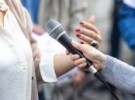Exposure to the finest art of the finest artists works improving, character-building wonders in us. Perhaps, then, exposure to the fine arts should either be made compulsory or should at least be strongly incentivised by governments.
$0/
(min cost $0)
Login or signup to continue reading
I am a better, vastly improved man, less ignorant about and more sensitised to First Australians, after my visit on Tuesday to the National Gallery of Australia's major exhibition Emily Kam Kngwarray.
A quietly knowledgeable NGA mover and shaker led my small party from bedazzling room to bedazzling room of Emily Kam Kngwarray's paintings, textiles and works on paper drawn from international and national collections. All of us were changed by what we saw and by what we learned. We were awed.
It is just not good enough that only the usual sorts of gallery-going Canberrans will see shows like this. Every citizen has a duty, for the general good of society, to improve himself or herself by being awed by the arts at their most awesome.
What if, then, being able to provide proof (a ticket, say, or an appropriate selfie) that one has been to a major exhibition made one eligible for some major government concessions, for free public transport, say, for reductions in rates or in motor registration fees?
What if (you may say I'm a dreamer, but I'm not the only one) to be able to show that one has been to Emily Kam Kngwarray entitled a citizen to two votes, not just one, at October's ACT elections?
Because the unexamined life is not worth living (Socrates and this columnist agree on this), the sudden, dramatic way in which our city's roads and car parks are dominated by hulking vehicles, especially hulking utes, requires some explanations.
This restlessly life-examining column has previously suggested other possible explanations and right here, right now, offers you another.
Of course there has to be something to the usual suspicion that people who feel a need to be seen in gigantic, ostentatious cars are trying to make up (however subconsciously) for feeling so small and shrivelled and nondescript in their actual lives.
We won't, here, (for this is a family column) go into the vulgar but probably psychologically astute sentiments of songs like Penis-size and Cars. But perhaps one's big, tall vehicle (and how tall some of them are, their drivers looking down on little me in my little car with the lofty disdain of a kookaburra in a tree looking down on a worm that's not worth eating!) is an attempt to compensate for one's low, shrunken self-esteem.
Of course it follows from this that those of us serenely happy in our petite cars (my pixie-sized VW Up! would almost fit into the load space of some hulking utes) are leading fulfilled lives and have no need for artificial pomp and show and swagger.
We will call my latest theory, with special application to Canberra and Canberrans, Tradie Envy (TE), although Tradie Imitation might be a better name for the syndrome.
Those of us who do ultimately useless work of the mind that achieves no obvious outcomes (I am thinking especially of Canberra's teeming public servants here while conscious of the way in which my own work of just thinking and writing is trivial, really) have a rapt admiration of tradies, of how they build and make and fix things, of how their majestic usefulness in practical things contrasts with our helpless uselessness.
The towering permanency of the achievements of bricklayers! The ways electricians bring light into our lives, dispelling life's darkness! How there is something god-like about the plumber who comes to us (in his loaded ute) and sorts things out, saving us.
Of course tradies actually need utes (there is some big building going on in my street and every morning an armada of tradies' loaded utes arrives) and a ute is a tradie's hallmark.
MORE IAN WARDEN:
But other Canberrans now driving these ute-behemoths don't have workers' workmanlike reasons for driving utes and my theory wonders if those of us whose working lives feel so feebly effete and useless are choosing to imitate, in what we drive, the tradies we so admire, so wish we were.
Meanwhile my own open, freely-admitted-to hero-worship of tradies is expressed in another way, by my ownership and love of a tradie's kind of dog.
Much-admired by tradies who see him ("Ripper dog!" they enthuse), he is just the kind of knockabout burly ugly RSPCA-rescued brute you so often see decorating the open backs of manly utes - although mine goes everywhere with me inside my girly little VW.
I mention my beast because, loving him with all my heart, there is touching new research (published on February 14) discussed in the latest online Smithsonian Magazine showing that some Iron Age peoples of the Northern Italy of the third to first century BCE chose to be buried with their dogs so as to be sure the companions they loved in life would continue to gambol with them in the afterlife.
Dog lovers we know, don't we, how our Iron Age brothers and sisters felt? How the separations from our pets when they die caused our ancestors then and causes us now such unique and terrible heartache? How the thought of an afterlife without the unique companionship of a dog is unthinkable? How the very idea seems more like a hell than a heaven?
Ian Warden is a Canberra Times columnist
Ian Warden is a Canberra Times columnist





















 Toi Staff
Toi Staff Gideon Levy
Gideon Levy Belen Fernandez
Belen Fernandez Andrew Mitrovica
Andrew Mitrovica Mort Laitner
Mort Laitner Nikkei Editorial
Nikkei Editorial Rami G Khouri
Rami G Khouri Ali Fathollah-Nejad
Ali Fathollah-Nejad
